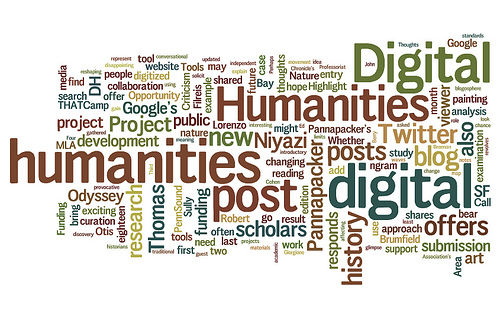
For over twenty-five years scholars have struggled with defining Digital Humanities (DH). One reason could be that there is an inherent divergence between the two terms “digital” and “humanities”. The first term represents a modern approach to identifying and capturing knowledge, leveraging the latest advances in computing technologies. The second rests comfortably on an academic legacy of writing, publishing, and peer review, going back to the Renaissance and the “Age of Enlightenment.” It is interesting to look back and see how the DH field emerged at the turn of the century.
Digital Humanities is deeply rooted in the wave of personal and public computing established by the popularity of PCs and the Internet during the 1990s. While all fields of academia have been “digitized” the Humanities appears to have gone through a more contorted transformation. This is a direct result of the impact computing has on digitizing text, and the corresponding development of taxonomies, ontologies, and metadata. Early definitions of DH primarily focused on the collection of data, initially textual, that enabled academics to “objectify” their thoughts and concepts and to make them more public. This reflects the early digital technologies that leveraged word processing. The ability to search large corpus of text and analyze and research patterns of information was groundbreaking.
During the mid 2000’s, Digital Humanities went through another round of redefinitions due to advances in new information technologies. There was a growing recognition of DH’s dual role, not only to digitally preserve the “human record” but provide a resource to create new artifacts of understanding that are unique in their own right. This evolving definition of Digital Humanity reflected a general acceptance that “new techniques and technologies are continually being developed and applied to Humanities data.”
By 2010 new communication technologies introduced improved methods of online scholarly collaboration. Time and distance were no longer a factor in knowledge transfer and conceptualization. As a result, the broadening definition of Digital Humanities encompassed the reality that it is no longer about the technology but rather what you can do with it and who can have access to the information. But more important there was a general realization that academia’s traditional role as the gatekeepers of knowledge was going through a transformation. Like the impact of the printing press on the church over five hundred years ago, the public creation and dissemination of information is altering society’s long held beliefs about education.
By reviewing the evolving definitions of Digital Humanities over the past twenty-five years it is clear from our 2020 vantage point how much the field has matured. Unfortunately, the challenge to present the simplest DH definition never appears to stop. But definitions aside there continues to be a pronounced shift to the “what” rather than the “how” in the use of terminology. No matter what the definition DH will continue to be the “bridge” that connects traditional research with the promise presented by machine learning and collaborative technologies
In conclusion, and for the benefit of my peers, I present my definition of DH.
“Digital Humanities is a field of study that utilizes information technology to transform analog and digital records into new objects of knowledge that can be stored, searched, and disseminated publicly”.